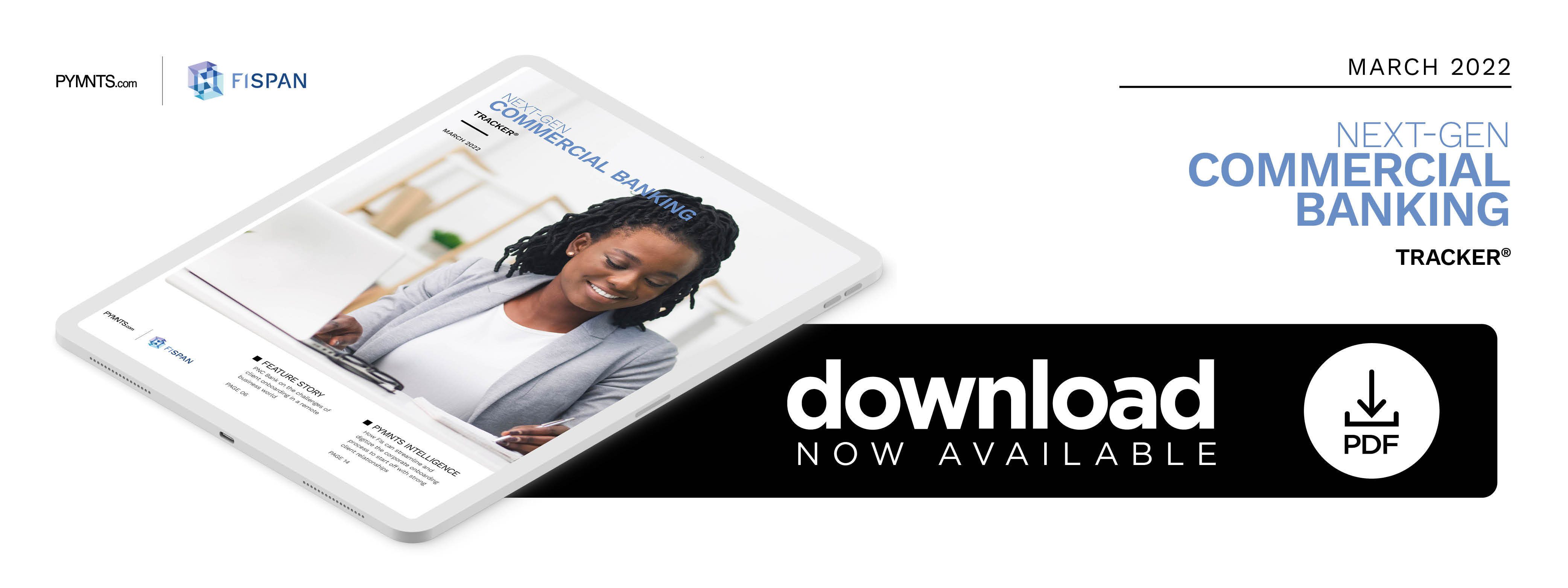PYMNTS Intelligence: Why the Onboarding Process Is Key to Customer Retention in Corporate Banking

The pandemic irrevocably shifted the banking experience — not just digitally, but also competitively.
As competition has intensified from a plethora of FinTech companies and online platforms delivering increasingly innovative financial experiences, customers’ expectations of their banks have grown accordingly. The evolution of digital banking on the consumer side also has a powerful impact on businesses’ expectations of corporate banking.
As banks compete to meet the ever-growing demands of a more digitally sophisticated customer base, one area for improvement stands out: the onboarding experience. Digital companies such as Amazon, Apple and Google have set the standard for perceptions of what a seamless onboarding process should be, but traditionally, financial institutions (FIs) have made it difficult for customers to open accounts.
Most company onboarding experiences still rely heavily on manual, time-consuming tasks and may require steps such as visiting brick-and-mortar locations and providing paper copies of documents. Corporate banks are no exception, and too many still pose hurdles for customers attempting to interact with them, leading to significant dropout levels in the account-opening process.
Opening a corporate bank account should be as fast and seamless as possible so that clients can focus on more pressing business needs. This month, PYMNTS Intelligence takes a close look at how businesses’ banking expectations are shifting as they migrate more of their financial operations online. It also explains why retaining corporate clients in this changing landscape means enabling speedy, simple and comprehensive digital onboarding.
The Onboarding Struggle
By removing the face-to-face element of the customer experience, the pandemic highlighted businesses’ need to focus on the less-visible aspects of providing excellent service. Improving behind-the-scenes processes to reduce friction has become a potent selling point. Today’s corporate customers, in particular, need faster processes with fewer steps and trips required during account setup. If they do not find these features at one institution, they will not hesitate to seek them at another.
One study found that banks contact customers approximately 10 times during the onboarding process via back-and-forth emails, telephone interactions and face-to-face meetings, delivering a friction-filled and error-prone customer experience that can take up to 16 weeks to complete. This process is not only a significant time drain for both parties, but also a major expense for FIs, with banks investing as much as $20,000 to $30,000 to onboard a new commercial banking client.
Many digital banks offer online-only account setup with the ability to sign documents electronically, but cumbersome onboarding is still all too familiar to business banking clients. One recent report of 400 U.K. business owners who had opened corporate banking accounts in the prior 12 months revealed that while 88% completed onboarding within seven days, half of these business owners were required to visit physical branches and sign hard copies of documents.
Slightly more than half also said the bank asked them for more information — up to five times — before being able to open an account. Digital bank customers fared better, with 23% having their accounts up and running within 24 hours, but customers did not necessarily associate digital banks with greater onboarding speed. Nearly one-third of business customers surveyed said they had previously abandoned account opening due to the process taking too long, yet most went on to open accounts at global, regional or local banks.
This outcome suggests that all corporate banks — not just digital ones — can succeed in achieving customer satisfaction with onboarding speed.
How Banks Can Streamline Onboarding
Many of the steps that complicate or prolong onboarding have to do with banks’ need for compliance with know your customer (KYC) and anti-money laundering (AML) regulations. One culprit may be that banks are using inefficient verification tools and secondary source data that require physical corroboration. This problem is the reason many banks are prioritizing investments in artificial intelligence (AI)-enabled data analytics features for corporate digital client onboarding.
Minimizing or eliminating the need for customers to visit physical locations is another important way in which banks can improve their onboarding processes. Digital banks are not the only ones that can provide fully online account opening, as many physical banks also offer this option. A fully digital onboarding process also can increase overall speed from start to finish, even aside from ruling out trips to branches.
As competition in corporate banking continues to heat up, banks cannot afford to give up one-third of their customers to slow onboarding processes. Partnering with FinTechs or other third parties to digitize onboarding may be the preferred strategy for commercial banks to streamline the process easily and completely without further delay.
